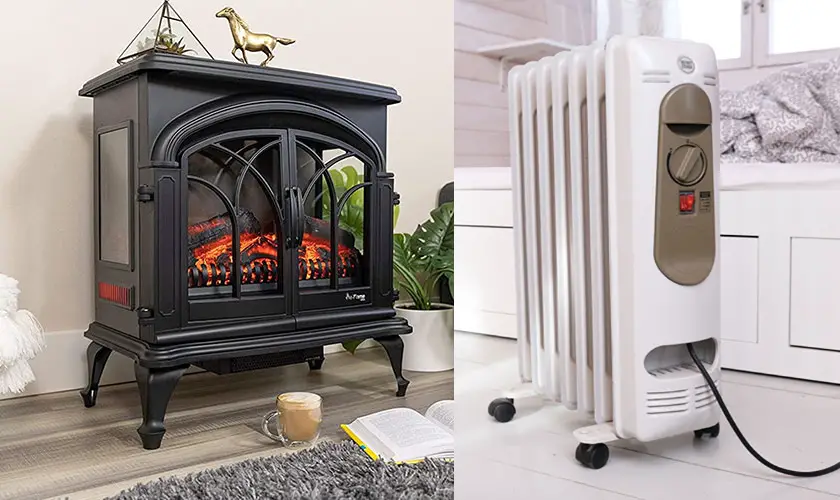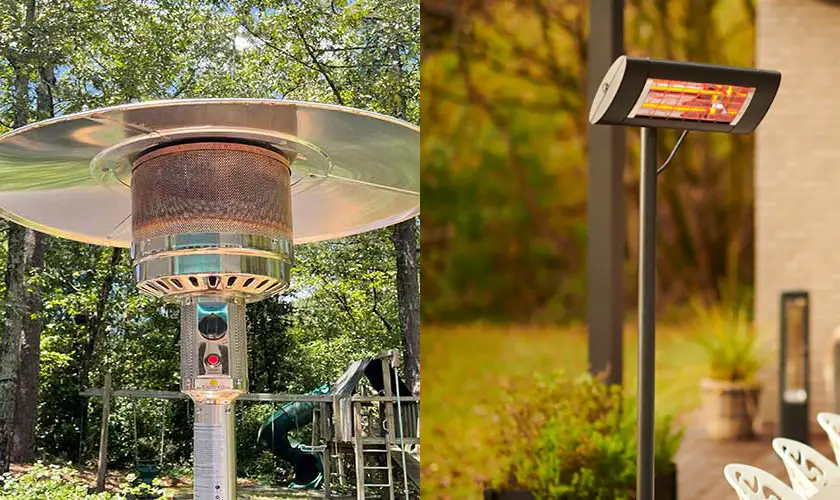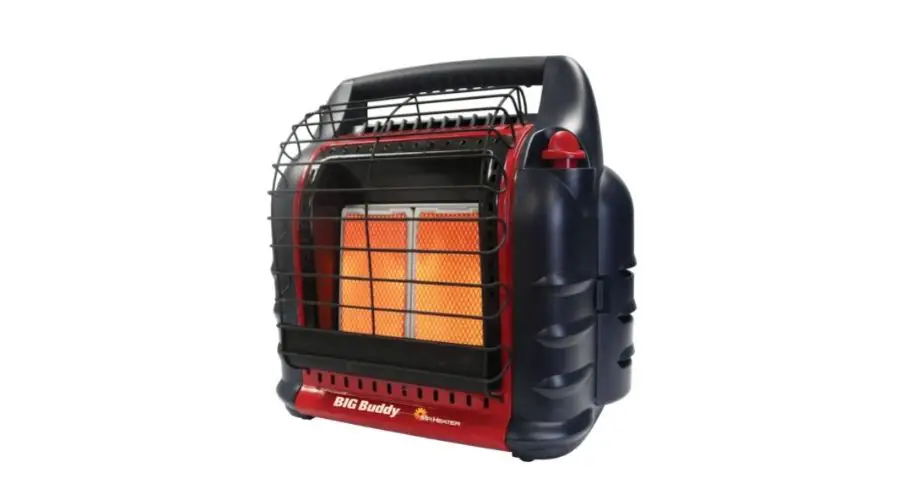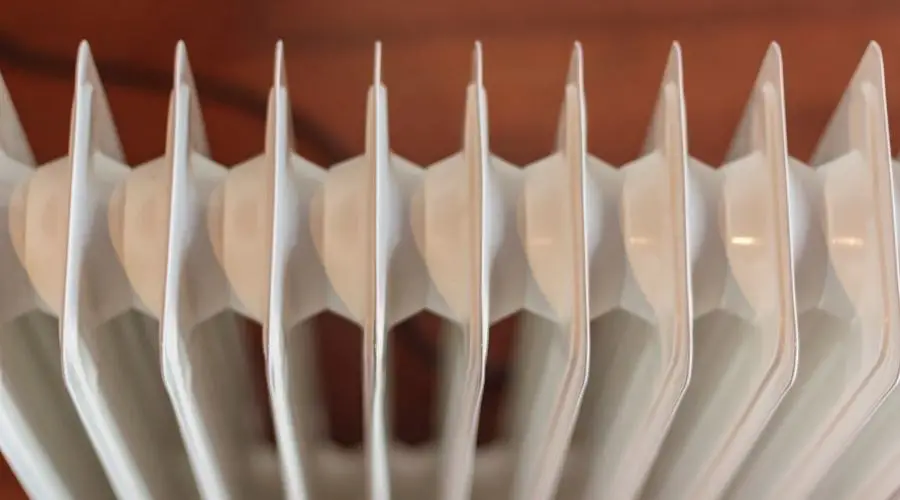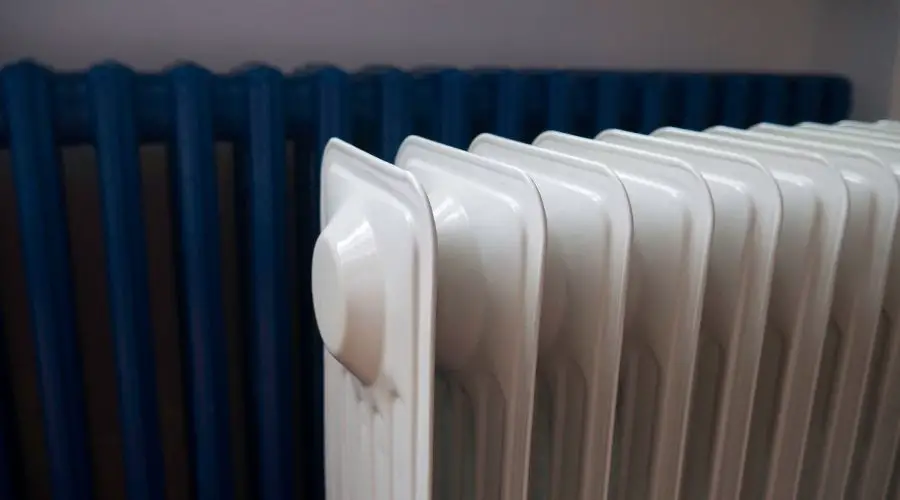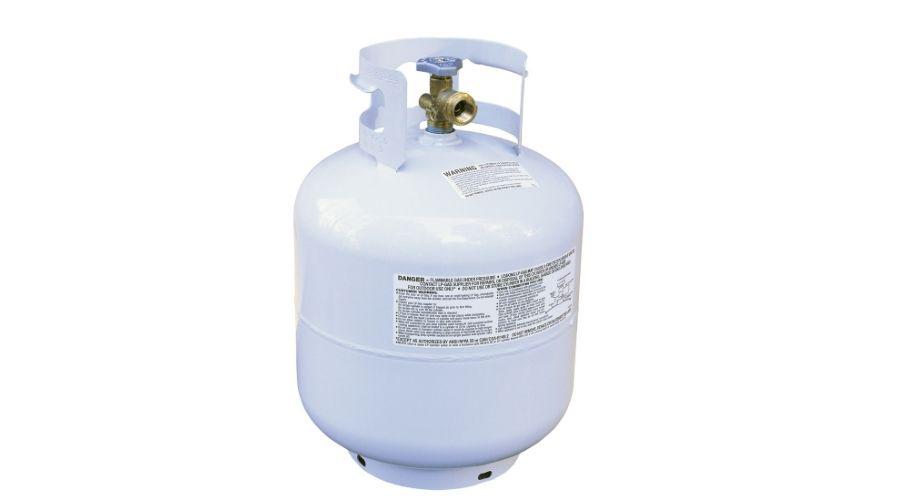
Even though many types of heaters are on the market, propane heaters are still a favorite. They don’t use electricity; they only need to burn propane to work, making them cheaper to operate than electric heaters.
A propane heater’s energy is measured in British Thermal Units or BTUs. They will tell you how much propane your heater will need and how many square feet it can cover. So, how much propane does a 30 000 BTU heater use?
A 30000 BTU heater uses around 1.05 gallons in 3 hours, which is 0.35 gallons per hour. Using a 30000 BTU heater for an hour costs roughly $0.80.
Propane heaters heat a larger area faster than most electric heaters. They are also able to elevate the temperature much more. A handy feature of propane heaters is a thermostat that senses the room temperature, and once it reaches the temperature you have set, it will turn off.
It will turn back on when the temperature drops below the set temperature. This feature will help save you some money.
How many square feet your propane heater will cover depends on a few factors: how many BTUs the heater has, how well-insulated your home is, and what climate you live in. Keep reading to find out if a 30 000 BTU propane heater will cover enough square feet for your home.
How Much Propane Does A Heater Use?
The standard measurement unit used to measure household appliances’ heating efficiency is British Thermal Units, BTUs for short.
Depending on how often you use it, a propane heater will burn about 500 to 1,200 gallons of propane a year. There’s a way to calculate exactly how much propane your heater will use.
You will first have to find out how much your propane tank weighs. This weight is also known as tare weight. You should be able to find tare weight written somewhere on the tank.
Subtract this weight from the weight of the tank with the fuel inside. You will then have to divide the weight of your tank by 4.24 pounds. 4.24 pounds is one gallon.
Then, divide how many gallons you have in your tank by your propane heater’s hourly burn rate. This calculation will show how many hours your propane heater will run.
Don’t worry about propane expiring; it has a very long shelf life. Your propane tank should never be fuller than 80% because of thermal expansion.
This means the volume of propane increases as temperatures get warm and decrease as they get cold. If you overfill your propane tank, it won’t have anywhere to expand.
If you have a sizeable stationary propane tank, you must recertify it every ten years. As long as you’ve correctly installed your propane tank and taken good care of it, you will be able to use it for many decades.
Remember to look out for any corrosion and leaks. It would be best to inspect your propane heater venting and connectors.
How Much Propane Does A 30,000 BTU Heater Use?
A 30000 BTU heater uses about 1.05 gallons of propane in 3 hours or 0.35 gallons an hour, which costs about 0.80 cents per hour.
How Many Square Feet Will A 30,000 BTU Propane Heater Heat?
How many square feet your 30000 BTU propane heater is depends on where you live. Here is a heating BTU calculator for the USA that may help you. However, we have made a graph for easy reference.
| CLIMATE | AVERAGE INSULATION | GOOD INSULATION | NOT INSULATED |
|---|---|---|---|
| Hot | 1000 square feet | 1100 square feet | 1000 square feet |
| Warm | 950 square feet | 860 square feet | 800 square feet |
| Average | 750 square feet | 750 square feet | 610 square feet |
| Cool | 665 square feet | 600 square feet | 530 square feet |
| Cold | 600 square feet | 530 square feet | 490 square feet |
| Extreme cold | 560 square feet | 500 square feet | 450 square feet |
Pick The Right Size Heater
The size is crucial when picking out the right propane heater for you. The bigger the propane heater, the more heat it produces. However, if it makes more heat, it also creates more carbon monoxide.
Get The Right BTU
British Thermal Units, or BTUs, are used to measure the energy of the propane heater.
- Smaller propane heaters usually create about 5000 BTUs an hour and are used for outdoor activities.
- Larger propane heaters produce between 10,000 and 40,000 BTUs per hour for indoor heating.
It would be best to choose a propane heater with an Oxygen Depletion System alarm, alerting you when oxygen levels in the room get low.

How Do Propane Heaters Work?
Propane heaters work by burning gas. They don’t need any electricity. On average, they last 15 to 20 years. The fuel that propane heaters use is propane.
This fuel is a clean-burning heating gas, and it is very efficient. When you burn propane, it produces less pollution than some other fuels. It mainly emits water and carbon dioxide, which is what people exhale.
When you compare propane with other fuels, it produces the smallest amount of carbon dioxide in the air when burning. That is why propane is considered a clean-burning heating gas.
How It Works
There is more to propane heaters than just the flame. If you were to ignite a propane torch, it would produce heat but not efficiently.
Propane heaters have many features that make the fire move in different patterns, making the heater more efficient and convenient.
The Propane Is Compressed Into Liquid
Propane is a gas that has been compressed into liquid so you can use it for grills and heaters. We use propane in cars, buses, fleet vehicles, and forklifts.
Propane is a fossil fuel but is never found alone in nature due to being mixed with other hydrocarbons. The chemical formula of propane is three carbon atoms and eight hydrogen atoms. That mixture is then processed.
This process involves the isolation of propane, liquification, and pressurization. After that, it is stored in pressure vessels and ready to be used and shipped.
Propane Heaters Have A Piezoelectric Igniter
Almost all propane heaters have a piezoelectric igniter. This igniter consists of a spring-loaded hammer and a particular material.
This material is usually quartz crystal because it can develop electrical potential when applying pressure. Sparks are produced when the spring-loaded hammer strikes the quartz crystal, setting the propane on fire.
Usually, propane heaters use porcelain to spread the flame in a specific pattern, distributing the fuel’s heat.
Two Types Of Ignitions
There are two main types of ignitions for propane heaters that you can choose manual and automatic ignitions.
1. Manual Ignition
If your propane has to be manually ignited, you must select a control knob to control your heater’s gas flow.
You can find manual ignitions that have a push-button or a pilot light. This push-button ignition creates a spark that causes the fuel to light the pilot.
The pilot light is a small flame that uses a small amount of fuel and burns almost all the time. It is used so that you can light the main burner fast. Without the pilot light, you’d have to light the heater with the igniter every time.
2. Automatic Ignition
Propane heaters with automatic ignitions use electricity to ignite and control the gas flow. You can manage these heaters with a switch or a hand-held remote.
A thermostat is a great thing to have on your propane heater. It can sense the room temperature. If it exceeds a specific temperature set, the thermostat will automatically shut the burner off, save you money and reduce fire risk.

Four Different Types Of Propane Heaters
Depending on how the heater transfers the heat to its surroundings, there are a few different propane heaters. The main types available are:
- Radiant space heaters
- Circulating type space heaters
- Wall-mounted heaters
- Vented and unvented heaters
1. Radiant Heaters
Radiant heaters are also called infrared heaters. They heat space the same way the sun heats the earth. These heaters heat objects, and those items then heat the room.
2. Circulated Heaters
Circulated type heaters are also known as “blue flame” heaters. This propane heater has a blue flame, while other propane heaters have blue and yellow flames.
They work like a central air heater where the flame in the heater warms the air. The warm air circulates and warms people and objects.
3. Wall-mounted Heaters
Wall-mounted propane heaters are installed on the wall. Both radiant and circulated heaters can mount to a wall.
4. Unvented Heaters
Unvented heaters only heat one room. They use air from inside the room for combustion. Vented space heaters use air from the outside for discharge, returning exhaust gas to the outside.
Take Safety Precautions
Your propane heater should have other safety features: heat-resistant burners, manual shut-off options, and rain and wind-resistant shields.
1. Don’t Go To Sleep With Your Heater On
Never fall asleep while your propane heater is on. If your propane heater stays on while you sleep, it will keep emitting carbon monoxide in the room while you use the oxygen.
Carbon monoxide could leave you unconscious or at least in a state of confusion, which is very dangerous because you won’t be able to react and escape to a place where there’s enough oxygen. Carbon monoxide could potentially even kill you.
2. Inspect Your Heater
Make sure you check your propane burner before each use. The propane heater usually produces both blue and yellow flames. If you see many more yellow flames than before, you probably have too much dust, pet hair, or dander stuck in it.
3. Clean Your Heater
It would be best if you cleaned it before the dirt caused any problems. You can clean it by simply blowing air into the area through a drinking straw. Make sure you turn off your heater before cleaning it.
4. Install Your Heater Away From Fire Hazard Areas
If you are installing an indoor propane heater, you have to do it where there’s no fire risk. It would be best if you didn’t place it near curtains, towels, doors, walls, furniture, or combustible material.
5. Wall-mounted Heaters Go On Noninflammable Walls
Make sure you attach a wall-mounted propane heater to a non-combustible wall. Air circulating propane heaters need at least 12 inches of clear space from the heater sides and back.
Radiant heaters require at least 18 inches of clear space from the sides and the heater’s back. There should also be 36 inches of clear space in the front of the radiant heater. Make sure you read the owner’s manual before you install your propane heater.
When propane is burned indoors, there’s a greater risk of elevated amounts of carbon monoxide, a product of incomplete combustion, in the air.
6. Leakage & Indoor-proof
It doesn’t smell, but most manufacturers add a foul smell to it to be recognizable. Carbon monoxide is hazardous because it competes with oxygen in the blood and deprives your body of oxygen. Make sure your propane heater is approved for indoor use.
Another problem that could occur is propane leakage. Since propane is heavier than air, it sinks to the floor and pools. Propane can cause fire or explosion.
7. Don’t Leave Your Heater Unattended
It is unsafe to leave your propane heater turned on when it’s left unattended. It would be best to have your propane heater inspected at least once a year by a licensed professional to keep it running correctly.
Conclusion
To conclude this topic, a 30000 BTU propane heater costs roughly 0.80 cents per hour, which is relatively inexpensive. Remember to use all the safety precautions mentioned above and enjoy using your propane heater!


